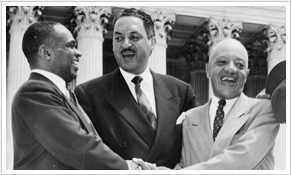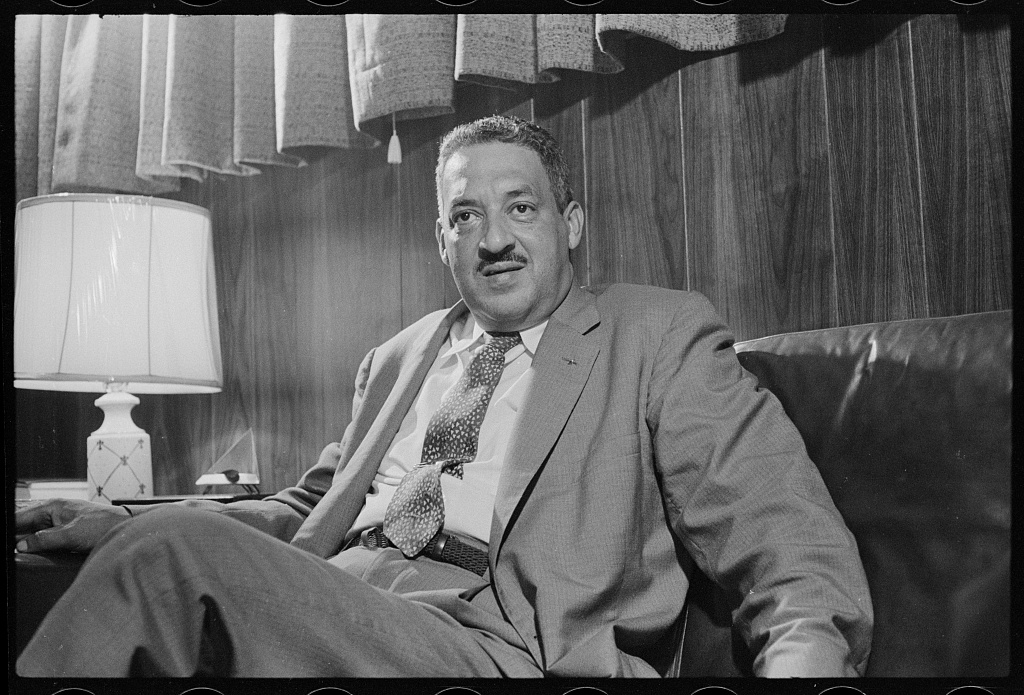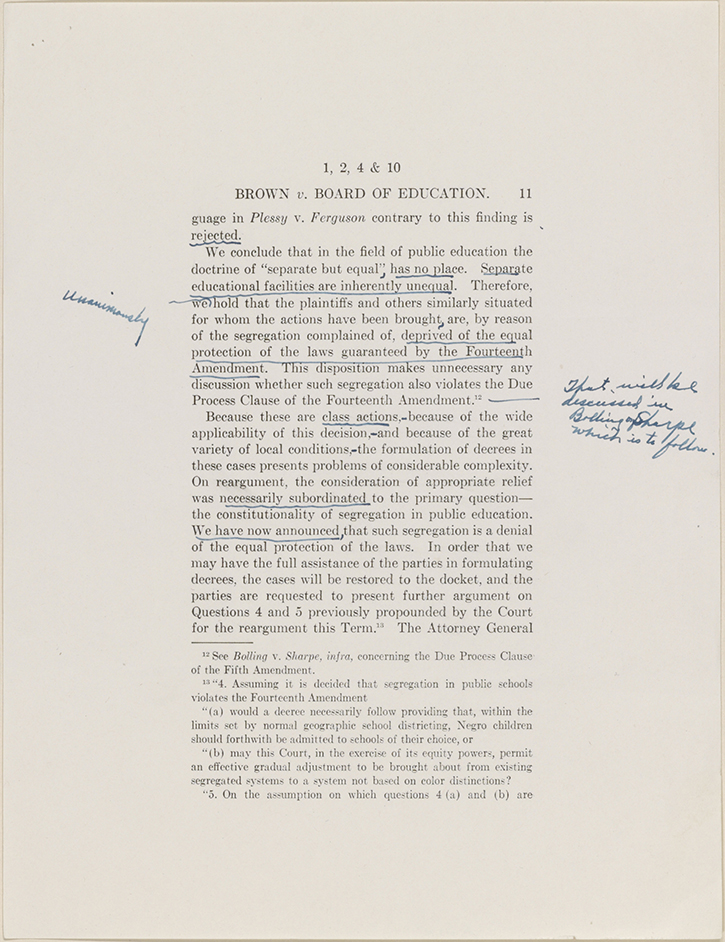
The Russell Daily News Newspaper Announcing School Desegregation
Courtesy of the Library of Congress

George E. C. Hayes, Thurgood Marshall, and James M. Nabrit congratulating each other on the Brown decision
Courtesy of the Library of Congress
The Brown case was combined with four other cases involving school segregation across the country: Briggs v. Elliot, Davis v. Board of Education of Prince Edward County (VA.), Bolling v. Sharpe, and Gebhart v. Ethel. These five cases, as a whole, became known as the Brown vs. The Board of Education of Topeka and were taken to the High Court in attempts to end racial separation in schools. Along with attorneys for each individual case, serving as the chief attorney for Brown was Thurgood Marshall, the head of the NAACP Legal Defense and Educational Fund.

Thurgood Marshall
Courtesy of the Library of Congress
Inside the courtroom, communication was key. As the debate progressed, the argument was split; various opinions were scattered. The chief justice, Fred M. Vinson, was leaning toward the idea that schools should remain the way they were, this convinced the majority of the court. However, Vinson died unexpectedly before the case hearing, and Earl Warren, the governor of California, was appointed by President Eisenhower to complete the case in Vinson's place. Warren had experience with politics before and using his persuasive communication skills, he was able to sway the courtroom. Eventually, this led to a unanimous verdict against school segregation the next year, officially outlawing it. With this, the case was won in favor of the plaintiffs, and in favor of equality.

The Warren Court
Courtesy of wikipedia.com

Earl Warren's reading copy of Brown opinion
Courtesy of Library of Congress
Outside of the courtroom, the decision was shared; the media coverage kept the public informed and involved with the case. Newspapers, television, photographs, and more built upon the verdict inside of the courtroom. The abundance of coverage prompted a variety of reactions, many of which were outraged at the decision, but also those that were promising. These reactions would play a part in the immediate outcome of the Brown case: a movement.

The Russell Daily News Newspaper Announcing School Desegregation
Courtesy of the Library of Congress
Two Reactions to the Brown v. Board U.S Supreme Court Decision
Courtesy of the Library of Congress
" We conclude that in the field of public education, the doctrine of 'separate but equal' has no place,' as segregated schools are 'inherently unequal.' "
~Earl Warren